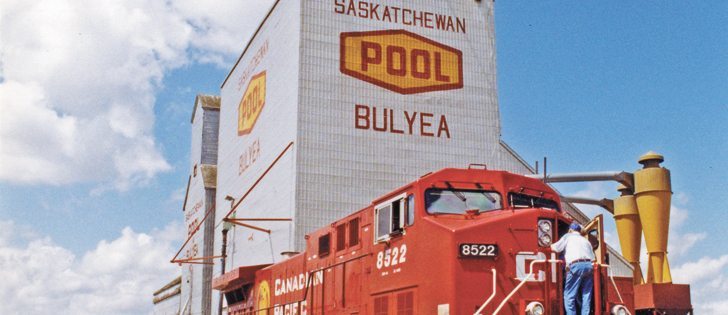An historical endangered places list put together by the National Trust for Canada has placed wooden grain elevators at the top.
Ray Ambrosi, a sustainability research scientist in Regina said the 6,000 wooden grain elevators that once dotted the prairie landscape now number less than 1,000.
“They should have been protected more properly a decade ago,” he said.
Every year, the trust publishes its top 10 list as part of its mission to raise awareness of the value that historic places bring to the quality of life, local identity and cultural vitality.
Read Also

Farming Smarter receives financial boost from Alberta government for potato research
Farming Smarter near Lethbridge got a boost to its research equipment, thanks to the Alberta government’s increase in funding for research associations.
“Whenever people think of Sask-atchewan, they think of the grain elevator,” said Ambrosi. “They were a link to the farming past.”
Besides being landmarks, however, Ambrosi said the towering icons symbolized something deeper that people have now forgotten.
“That is the co-operative history of the province,” he said.
“The reason those elevators went up was mainly because they were owned by the (Saskatchewan Wheat) Pool, and the Pool was the largest co-operative in the entire world. Those buildings were symbols of people working together.
“There’s really a symbolic link between people and the landscape expressed through those elevators.”
Ambrosi said the mass destruction of wooden elevators, primarily during the 1990s, was shortsighted.
“No other place in the world had giant wooden structures for storing grain in. They were fascinating.”
He adds that some communities and individuals have preserved them, but they are quite expensive to maintain and not enough effort was put into conserving them. Only 23 have received heritage designation.
The trust said it bases its choices on the significance of the site, the urgency of the threat, the potential for a solution, and the presence of active community support for preservation of the site or location.
Also making this year’s top 10 list are Saskatchewan’s prairie grasslands, notably the community pastures, once run by the Prairie Farm Rehabilitation Administration.
The PFRA pastures comprise 1.8 million acres, which the trust reports is some of the last remnants of Canada’s native grasslands. It is an ecosystem home to about 31 species at risk, many indigenous archaeological sites and homesteader heritage.
Trevor Herriot of Public Pastures-Public Interest agrees with the choice, but said it goes beyond cattle grazing.
“We also need to be looking at the legacy of these lands and trying to maintain them for their conservation values and their human heritage values,” said Herriot, the environmental group’s co-chair, which was formed to prevent the sale of federally owned community pastures.
Manitoba has announced their lands will remain in the control of the government, whereas in Saskatchewan, the government is leasing or selling the land to current pasture patrons.
“The reason they put them on the list I think is that the (Saskatchewan) provincial government has really not provided for any way to conserve the heritage and conservation values on those pastures.”
Herriot would like to see the federal and Saskatchewan governments work together to address conservation management and the human heritage values of the lands.
Endangered Places
The Top 10 Endangered Places List is compiled from nominations received as well as from news items the National Trust has been following. The 2016 list includes:
- Canada’s Wooden Grain Elevators — Rural icons vanishing from the landscape.
- Vancouver’s Chinatown, Vancouver, B.C. — Development wave crushes culturally unique neighbourhood.
- Former Royal Alberta Museum, Edmonton — Modernist gem under threat.
- Spaca Moskalyk Ukrainian Catholic Church, Lamont County, Alta. — Marker of Ukrainianheritage could be lost.
- Saskatchewan’s Prairie Grasslands, — A storied landscape of natural and cultural value at risk.
- Nottawasaga Lighthouse, Collingwood, Ont. — Imperial Tower crumbling into the bay.
- Gibson Isolation Hospital, Belleville, Ont. — Tearing down a piece of heritage for parking spaces.
- Saint-Vincent-de-Paul Penitentiary National Historic Site, Laval, Que. — Historic federal penitentiary wasting away.
- St. Stephen Post Office National Historic Site, St. Stephen, N.B. — A National Historic Site being ruined by neglect.
- Harbour Grace Court House National Historic Site, Harbour Grace, N.L. — Handsome colonial treasure deserves a fair trial.


















